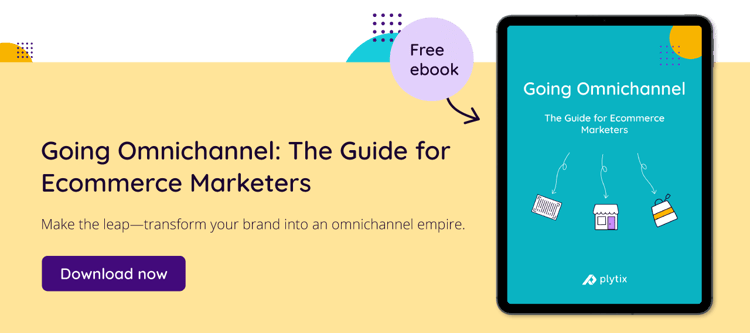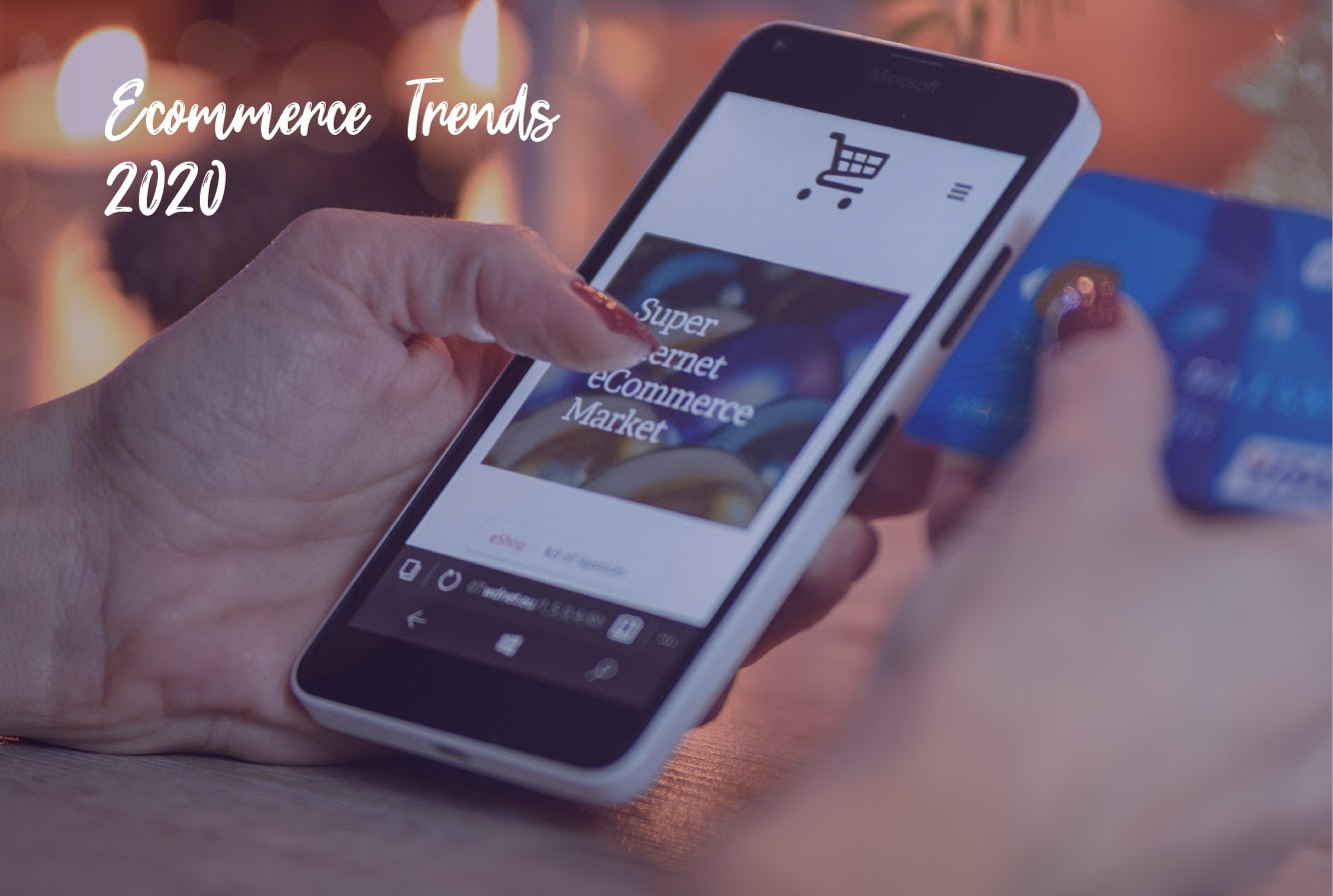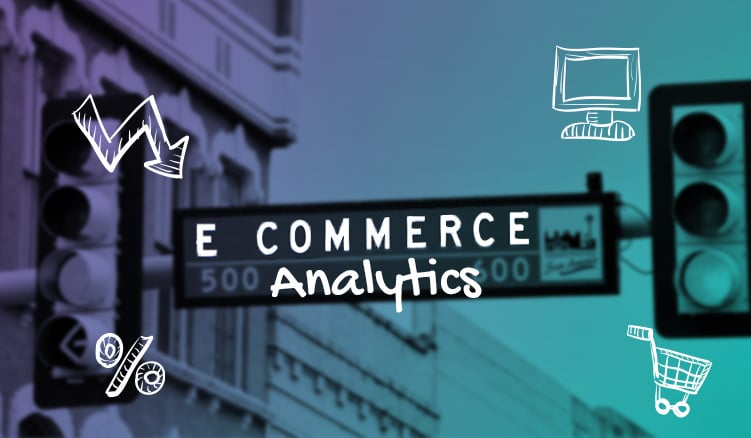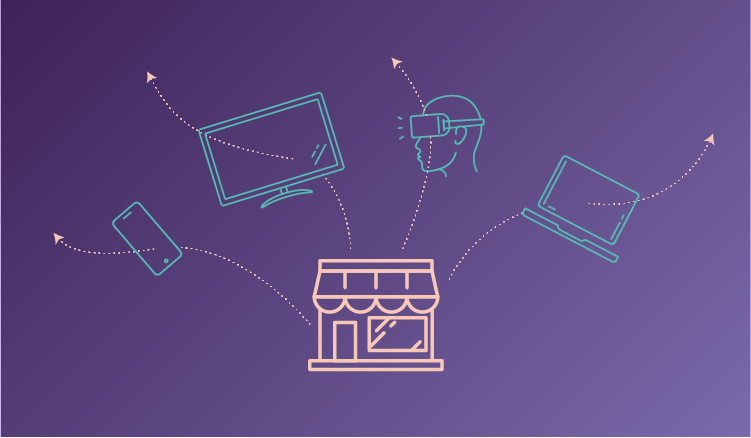It’s no secret that, like anything, ecommerce trends come and go. This year, consumers are shopping a lot differently than they did even a year ago. The things we are buying today are probably a lot different than the things our parents bought when they were our age. And everyone knows marketing has changed radically as technological advancements have reached warp speed!
However, one thing we can discount as a trend is ecommerce. In North America, ecommerce accounted for close to 15 percent of specialty retail sales in 2018. In China, that number was more like 23 percent. Around the world, ecommerce revenue was nearly $2,300 billion.
Unlike trends, ecommerce is here to stay. However, that doesn’t mean there aren’t important trends within the ecommerce industry that online sellers can take advantage of. Keep reading to find out all about the key trends that will help you boost sales and ride the wave of ecommerce success right through 2019.
Top 10 Ecommerce Trends for 2019
Voice search, machine learning, community building, oh my! Sure, trends come and go, but these are the ones worth tackling to add value, give your customers an awesome experience, and ultimately grow your business in 2019.
Personalization Will Go Deeper
Personalization is all about collecting data on the shoppers who interact with your ecommerce business so you can show them hyper-relevant content and products. This data may include searches on your website, demographics and location, purchase history, social media behavior, items that are currently in or were previously added to their shopping cart, and more.
Gartner predicts that ecommerce companies who successfully adopt personalization could enjoy a 15 percent profit boost by 2020.
For the next trend, we’ll take personalization beyond passive, predictable recommendations to artificial intelligence-enabled chatbots that can “conversationally” suggest products based on personalized data.
Artificial Intelligence and Machine Learning Provide Engagement at Scale
Machine learning is a subset of AI in which a machine actually learns from data, updating algorithms on its own as it gets smarter about the information it’s processing.
In 2019, machine learning will boost ecommerce growth by empowering brands to learn more about customers and deepen the personalization that impacts the individual user experience. When working with visual content, for example, brands can use semantic segmentation strategies so that their AI model can learn more accurately and deliver target predictions.
When combining the personalization we discussed above with this level of smart technology, you’ll be able to mimic the in-store shopping experience, but with the most informed and engaged attendants who already know your shoppers’ preferences and are available to recommend awesome products around the clock!
Chatbots Come Online
We didn’t want to go any further without exploring chatbots a little more.
Chatbots are a machine learning technology that helps brands interact with customers at scale without losing any of the personalization. In addition to answering common questions and providing recommendations, these bots can often help guide online shoppers through the buying process similar to the way a customer service agent would.
Chatbots are creating interactive environments for customers in social media messaging apps, on websites, and in other apps. LEGO, for example, uses a chatbot to help people choose between the may toy sets they offer.

Ralph, LEGO’s Facebook Messenger Gift Bot, asks users a series of questions like:
- What is the age of the person receiving the gift?
- How much are you looking to spend?
- Where do the receiver’s interests align with LEGO’s offerings? (Star Wars, superheroes, etc.)
It then makes product recommendations based on the answers it receives:
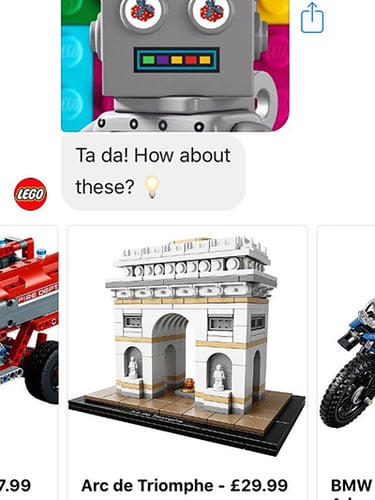
Artificial intelligence will be a $40 billion industry by 2025. LEGO is a great example of how ecommerce businesses can cash in on the opportunity.
Social Media Will Go Transactional
If there is any question that social media selling will drive ecommerce growth around the world in 2019, all one has to do is look to China—where 55 percent of social app users are already buying goods and services in-app. In addition, 40 percent of merchants are already using social media to generate sales and nearly 90 percent of ecommerce shoppers believe social media helps them make shopping decisions.
Social messaging apps are also poised to implement transactional features. And with WhatsApp, Snapchat, and Facebook Messenger engaging billions of users, it’s a good time to get into omnichannel ecommerce.
Google’s Algorithm Will Keep Changing
Google, the undeniable ruler among search engines, will continue to make mysterious tweaks to its algorithms in 2019. Here are the key updates ecommerce sellers will want to look out for to stay ahead of the curve.
Focus on UX in SEO
In 2019, Google will prioritize user experience more than ever before. That means the best-performing pages—not the most optimized ones—will be showing up the highest in Google search results. Performance metrics like bounce rate and time on page are about to become extremely important.
We’re with Phil Forbes, marketing specialist at Packhelp: “Long story short, if you’re using SEO in any way, shape or form, you’ll be left behind in 2019 if you don’t start spending more time on it.”
Mobile-First Websites Will Dominate
Mobile-first indexing means Google will start looking at the mobile version of your website before anything else when it comes time to determine search engine result rankings. And, no, this update won’t only affect mobile searches. Flat out, if you aren’t focusing on your mobile experience you can expect your site rank and organic traffic to take a hit.
Here’s how to think about your ecommerce site from a mobile-first perspective:
- Prioritize mobile page speeds and load time
- Optimizing images, dynamic features, and other slow-loading elements for mobile
- Check that your web design is completely responsive on different mobile devices
Optimizing for Voice Search Will Become More Important
Today, people are using voice-activated assistants like Siri, Alexa, Google Home, and others to search for information. In fact, Comscore found that more than half of the total searches will be conducted via voice by 2020.
And since the way we speak is often very different from the way we type, Google is starting to pay attention to the difference.
In 2019, Google will prioritize content that’s optimized for voice search. Companies should be interested in playing along not just for the improved search ranking but for the chance to star in a “featured snippet”—those answers that pop up in a box at the top of the first page in Google.

To take advantage of Google’s prioritization of voice search, think about the natural way people speak. For example, if I’m online shopping I would probably start with a phrase like “best record player.” However, for a voice search, I might start my research by asking “What stores near me sell record players?”
Some ecommerce companies are already taking advantage of providing services ordered via voice. Where will you start optimizing for voice?
Better Product Visualization Will Help with Returns
As many as 40 percent of online shoppers have returned purchases because of poor product details. Nearly 90 percent are unlikely to buy again from a retailer who provided them with inaccurate product details.
Returns and refunds aren’t just annoying—they’re bad for profits, conversions, and your business’ reputation. However, recent ecommerce trends in product visualization can help better describe products and reduce returns.
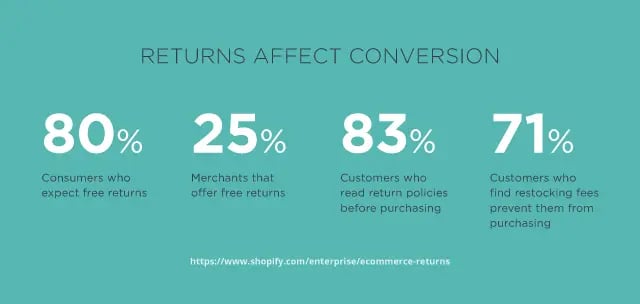
In 2019, product visualization will go beyond simple photos to provide interactive features like high-fidelity zoom, demonstration videos, and 3D images. These capabilities will help sellers manage expectations, allow shoppers to make informed purchases without regret, and ultimately add to the shopping experience while diminishing returns.
Even More Shopping Will Take Place on Mobile Apps
SearchEngineLand found that almost 60 percent of Google searches are conducted on mobile devices. In addition, people browse nearly 300 percent more products on apps than they do on even mobile-friendly websites!
While ecommerce businesses should heed Google’s advice to make their websites mobile-friendly, it’s also time to go all in and either develop a shopping app or partner up with resellers who are crushin’ it on their own apps.
The Checkout Process Will Get Streamlined
Is anyone surprised that simplifying the purchasing workflow will drive ecommerce growth this year? It’s a win-win: Customers are happy to get what they want quickly and sellers are glad to close the sale with less effort.
As it stands, cart abandonment can get as high as 75 percent. Business Insider reported that $4 trillion in products are abandoned in the shopping cart every year.
Why? The top reason is hidden fees that don’t appear until it’s time to check out. Other leading reasons include usability concerns like requiring an account and having a long or complicated checkout process. In addition, about 1 in 5 shoppers who abandon the checkout process simply don’t feel secure providing their payment information.
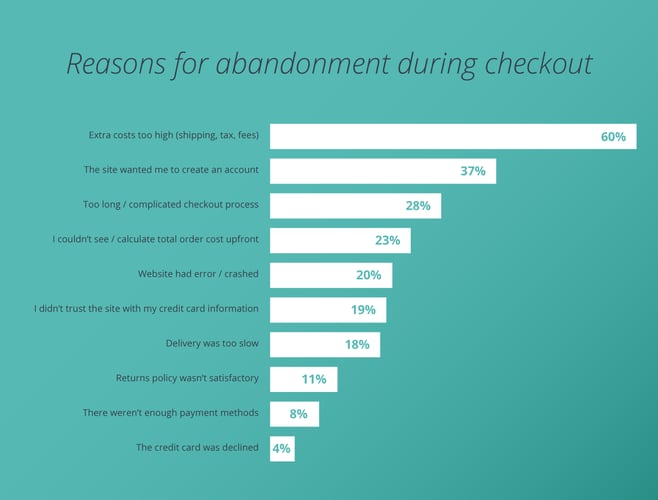
Here are some updates online brands and retailers can make to simplify checkout and make more sales:
- Put the whole workflow on a single, easy-to-navigate page
- Use conditional formatting and autofill to help shoppers complete fields faster
- Don’t force shoppers to create an account to checkout
- Allow users to scan in their credit card info with image recognition software
- Be transparent with extra fees and/or offer free shipping
- Show off security with badges on the checkout page
Interaction with Consumers Will Reach New Heights
In the digital world, people crave connection more than ever. Why not try to bring them together over something they already have in common—an interest in your brand and products?
In 2019, ecommerce brands will use community, influencer relationships, and user-generated content to help them grow.
Brands will Form Communities for Buyers
In 2019, brands will see the benefit of creating communities for their “fans” and “followers” (formerly “consumers”) where they can provide value while simultaneously offering omnichannel shopping opportunities.
Ways to build up your community include:
- Consistently sharing content, videos, and posts created specifically for each of your social channels
- Getting active in the relevant forums and online groups
- Creating and distributing useful or entertaining content like blogs and emails
- Getting involved with influencers and taking advantage of UGC (both of which we’ll discuss next)
Influencer Marketing Will Continue
All signs point to brands using influencer marketing to grow sales even more in 2019. Thanks to the popularity of this tactic, social media influencers have gotten getting better and better at connecting with audiences alike to create successful word-of-mouth marketing campaigns.
Now that influencer marketing is here to stay, one thing that will inspire more brands to get on board is the widespread shift in the payment model.
“What we’ve been seeing is brands express an increasing desire for performance-based payment, to ensure their marketing dollars are being used effectively and influencers deliver top quality work,” said Michael Quoc, founder and CEO at Dealspotr. “With this kind of payment model, we’re going to see more and more brands trying out influencer marketing because there’s less risk.”
User-Generated Content Will Help Sell
User-generated content (UGC) enables brands to foster connection by sharing with their audience how other customers are using their products. Typically, shoppers who are already willing to share their video, pictures, etc. online are also willing to let brands republish their content for nothing more than permission.
Makeup brand Mecca, for example, encourages followers to share pictures of themselves on Instagram while using Mecca’s products. Mecca then reposts these pictures and adds all their own branded content and selling features. The brand is able to source free marketing material and also gain traction with the original poster’s fans.

The social marketing firm Flockler found that their clients saw a 20 to 30 percent boost in conversion rate when UGC was displayed at the final purchase point. While this method is extremely popular for beauty and lifestyle brands, we don’t see why it can’t work for anyone who sells a product or service.
Automation Will Continue to Supplement Small Teams and Budgets
Automation refers to "the creation and application of technology to monitor and control the production and delivery of products and services.” In ecommerce, it can be used to streamline everything from sales to marketing, inventory, and delivery. In fact, it’s become an indispensable technology that many modern product management tools use.
So many ecommerce managers and marketers are operating with minimal staff and on shoestring budgets that automation is one of the best things they can do to make their stores run like well-oiled machines.
Shopify Flow is a great example of automation in action. It automatically preloads new products and publishes them to your channels, unpublishes out-of-stock products and sends a message to marketing to pause advertising, identifies and segments customers, and more.
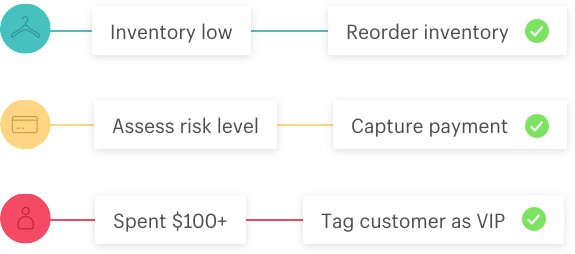
Which trends are you already taking advantage of? Which are you most excited to try out?
If you’re in a place where you’re constantly too busy to try any cool new stuff like this, we get it. Ecommerce marketing and management is a big job—made even more so if you don’t have a system in place that keeps you and your products organized across channels, product changes, and departments.
You’re exactly why we invented Plytix. Our product information management (PIM) software was developed with busy ecommerce marketers and managers in mind. The simple yet powerful framework empowers businesses of any size to centralize, optimize, distribute, and analyze their product information and improve their revenue per employee.
Learn more about Plytix’s methodology, set up your account in just minutes (no credit card required!), or get in touch with our awesome customer support team and get your questions answered.
Want to know a little more about what PIM can do for your business, fist? Grab our free, comprehensive PIM guide that we created specifically for online retailers and brands who are ready to build their ecommerce empires.


